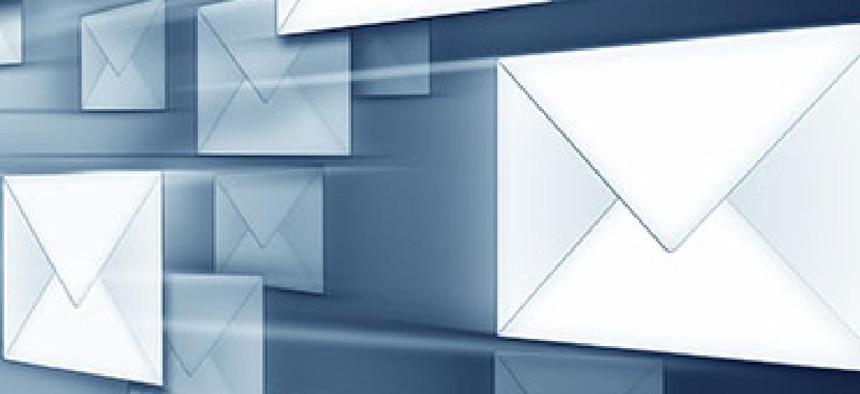State Department IG weighs in on broader email concerns

Report offers seven recommendations "to improve the use of record emails by Department of State employees and mission staff members."

(Image: Markus Gann / Shutterstock)
The State Department is having problems securing the preservation of agency emails as federal records, according to a March 2015 Inspector General report that was released into the media maelstrom surrounding former Secretary Hillary Clinton's private, home-based email server.
Clinton is on the hot seat for maintaining a private email server that she used for all State Department business while she held the post from 2009 to 2013. On March 10, she announced she had turned over about 30,490 printouts of emails to the State Department for preservation as records. Clinton also announced, through a document released by an aide, that she deleted 31,830 emails deemed personal.
During Clinton's tenure, records management issues plagued the wider department. A system introduced in 2009 called State Messaging and Archive Retrieval Toolkit (SMART) was designed to allow staff to preserve emails and cables using Microsoft Outlook. The system stores these documents centrally, and permits employees department-wide to view record material, although there are ways to compartmentalize access.
"SMART... was a multi-year effort to move away from what was a text-based, telegram-type messaging system," then-CIO Susan Swart said in a 2012 interview with Government CIO. "And it was the way we did all of our formal communications between agencies, our posts overseas, and the State Department."
Essentially, SMART grew out of the all-caps diplomatic cable, and provided foreign service officers and others in State's globe-spanning operation access to a multimedia-friendly tool for disseminating formal communications and reports throughout the agency. According to the OIG report, some postings were active in retaining records on the system, while at other embassies and consulates, it appeared to be a low priority.
The Office of the Inspector General found that "several major conditions impede the use of record emails: an absence of centralized oversight; a lack of understanding and knowledge of record-keeping requirements; a reluctance to use record email because of possible consequences; a lack of understanding of SMART features; and impediments in the software that prevent easy use."
The report also found that "[s]ome employees do not create record emails because they do not want to make the email available in searches or fear that this availability would inhibit debate about pending decisions."
The result was that in 2011, State Department employees created just 61,156 record emails out of about a billion total sent emails. The report found that the numbers for 2013 were about the same.
This doesn't mean that Clinton's emails (or at least those sent to State Department employees) are at risk of disappearing -- only that they were not stored in SMART for broader access. Clinton, in her March 10 press conference, maintained that she complied with the agency's internal records schedule by including individuals with State.gov email addresses on her official correspondence. And the OIG report includes a footnote that indicates top officials were not tasked with using the SMART system for record-keeping purposes. "These assessments do not apply to the system used by the Department's high-level principals, the Secretary, the Deputy Secretaries, the Under Secretaries, and their immediate staffs, which maintain separate systems."
A State Department report to the National Archives and Records Administration, dated Feb. 5, 2015, sheds some light on how this distinction may have worked. "The Department continues to recommend that staff save records to [SMART]. To properly preserve the emails of senior officials, including ambassadors, the Department has established a procedure for departing officials to have their emails sent to the Department's Records Officer for preservation.
However, some SMART record emails did originate from the senior chambers of the State Department, according to the 2013 data compiled in the OIG report -- although just seven came from the Office of the Secretary. The Undersecretary for Management generated 77, and the Bureau of Information Resource Management (the CIO wing of State) generated 1,630.
Undersecretary for Management Patrick F. Kennedy reported, in a covering note to the Feb. 5 update to NARA, that State was making strides in hitting the targets for electronic email and documents records management laid out in a 2012 Presidential Directive.
"We issued guidance to Senior Officials reminding them of their overall records management responsibilities, including e-mail, and issued a directive to preserve electronically the e-mail of Senior Officials upon their departure from the Department," Kennedy wrote.






